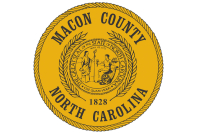Plant life distinct to the southern Blue Ridge
The elevations of the southern Blue Ridge province above 4,000 feet can be thought of as a peninsula of northern terrain extending into the southeastern United States, where typical flora and fauna of northeastern and southeastern North America intermingle. Through a combination of processes, the province has evolved into the mature upland landscape we know today. It has become especially diverse in two regards: plant life and distinctive natural areas.
According to B. Eugene Wofford’s Guide to the Vascular Plants of the Blue Ridge (1989), the province presently features upwards of 1,500 vascular plants: trees, shrubs, vines, herbs, sedges, grasses, ferns, horsetails, quillworts, and club-mosses. Many are considered to be showy plants when in flower. There are 130 species of trees, whereas in all of Europe there are only 75 or so species. The primitive non-vascular plants include countless moss and lichen species. And the province is one of the epicenters in the temperate world for mushrooms.
Before the introduction about 1910 of a non-native fungus that decimated the American chestnut trees, the prototypical forest here was “chestnut-heath;” that is, chestnut was the dominant canopy tree, with an understory mainly made up of shrubs such as rosebay rhododendron, mountain laurel, and other members of the heath family. Before the arrival of the fungus, 30 percent or more of the deciduous forests in the province were made up of chestnut. Almost all of the trees seen in the province now are root sprouts that persist despite the fact that their main trunks have died back to ground level. Within a few years, almost all of these sprouts succumb to the fungus before they can flower and fruit. Today, the prototypical forest of the province is “oak-heath.”
The Blue Ridge is a mosaic of varied habitats, large and small: grassy and heath balds, marshes and bogs, periglacial boulderfields, beech gaps, seepage slopes and cliffs, oak orchards or wind forests, and more. The forest types of the present-day southern Blue Ridge include the spruce-fir or Canadian zone above 5,500 feet. It shares characteristics with evergreen forests in eastern Canada and features the most boreal-like climate in the southeastern United States. The conifers that predominate are red spruce and Fraser fir. The latter is being infested and killed by the balsam wooly adelgid, an introduced aphid pest.
Between 4,000 and 6,000 feet, the northern hardwood zone shares characteristics with the “north woods” of New England. But note that Michael P. Schafale and Alan S. Weakley in their Classification of the Natural Communities of North Carolina (1990) made the point that there are clear differences between the two zones:
The name ‘northern hardwood forest,’ traditionally given to these communities, implies a similarity to hardwood forests of the northern Appalachians. Many tree, herb, and shrub species are shared; however our Northern Hardwood Forest has evolved under different climatic regimes, with a different [geographic] history, and has many plant and animal species endemic to the southern Appalachians. It is clearly not the same natural community type as the forests of the northern United States.
Related Items
Yellow birch and American beech are indicator species for this southern version of the northern hardwood forest, which also features hobblebush, yellow buckeye, and mountain maple.
In Great Smoky Mountains National Park: A Natural History Guide (1993), Rose Houk described the forest that sometimes appears below the northern hardwood forest in this manner:
In a place outstanding for diversity of forest types, one type, unique to the southern Appalachians, stand out as the richest of the richest. It is the cove hardwood forest, the forest primeval, one of the most diverse plant communities in the world. The word cove, when used with hardwood forest, refers generally to a sheltered valley, sometimes flat and sometimes steep, below 4,500 feet elevation. Cove soils are rich and deep.
The largest and most famous of the cove hardwood forests is Joyce Kilmer Memorial Forest near Robbinsville, North Carolina, just south of the Great Smoky Mountains National Park. Located on U.S. Forest Service lands, the 3,840-acre tract is an amazing site. In A Directory of North Carolina’s Natural Areas (1987), Charles E. Roe provided this description:
Massive Canadian hemlocks dominate the forest along the stream flats … but farther upstream give way to mixed hardwoods … Hemlocks measure up to 70 inches in diameter, tulip poplars 76 inches, and oaks 72 inches. Rhododendrons prevail in the forest understory on the flats and ravine bottoms as well as on the ridge top heath balds or ‘slicks.’ Green carpets of mosses and liverworts cover boulders, old logs, banks and tree bases in the damp, shaded environments … This classic primeval forest is an exceptional research and recreational source.
Below 3,000 feet, various pine, oak, and hickory species predominate. This type of “pine-oak-hickory” habitat — often made up of Virginia pine, pitch pine, or Table Mountain pine, red oak, chestnut oak, and pignut hickory — can also appear in higher elevations along exposed slopes and ridges that are relatively dry.
Along streams in the lowest elevations and on moist mountainsides up to 4,000 feet, eastern hemlocks form forests called “hemlock ravines.” Rosebay rhododendron and other shrubs sometimes form a dense under story. The eastern hemlock along with the endemic Carolina hemlock are both being infested and killed by the hemlock wooly adelgid, another introduced aphid pest.
George Ellison wrote the biographical introductions for the reissues of two Appalachian classics: Horace Kephart’s Our Southern Highlanders and James Mooney’s History, Myths, and Sacred Formulas of the Cherokees. In June 2005, a selection of his Back Then columns was published by The History Press in Charleston as Mountain Passages: Natural and Cultural History of Western North Carolina and the Great Smoky Mountains. Readers can contact him at P.O. Box 1262, Bryson City, N.C., 28713, or at This email address is being protected from spambots. You need JavaScript enabled to view it..









